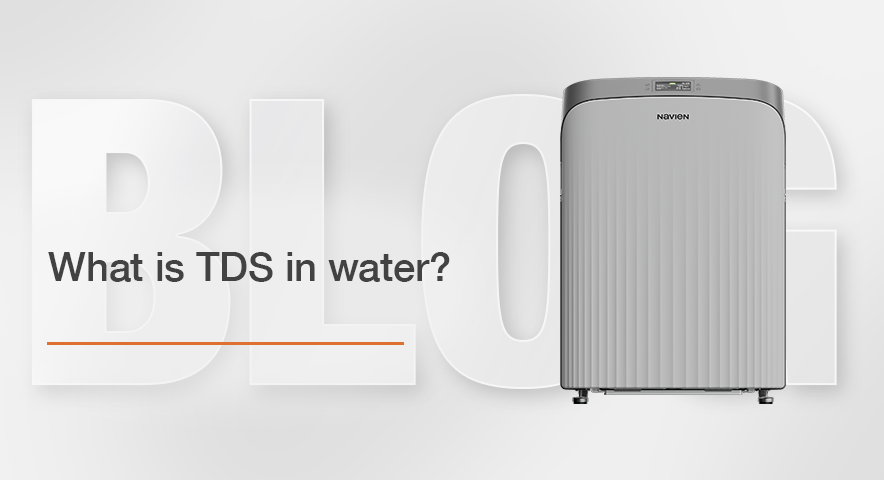TDS stands for Total Dissolved Solids - it’s an umbrella term for a variety of invisible, tiny particles that dissolve in water such as minerals, salts, metals and organic material.
Examples of TDS commonly found in drinking water include:
- Minerals: Calcium, magnesium
- Salts: Potassium, sodium, bicarbonates, chloride, sulfates, fluoride, and nitrates
- Metals: Iron, manganese, and lead
- Organic: Pesticides, herbicides, bacteria, fungi, pharmaceuticals, disinfectants, and more
Anything small enough to dissolve completely in water (under 2 microns) is considered a dissolved solid. In contrast, particles that are too big to dissolve in water—like sand or clay—are called Total Suspended Solids (TSS).
Why should you care about TDS in your home’s water?
Total dissolved solids in water can’t be seen, but they can have a noticeable impact on your daily life. While not inherently dangerous, high TDS levels can be a red flag that your water may contain harmful contaminants. Extremely high TDS levels can make water unsafe.
3 main ways TDS affects drinking water:
- Taste - Water with very high TDS can taste bitter, salty or metallic, and water with extremely low TDS can taste “flat” (for example distilled water).
- Health - High TDS levels are worth investigating, because certain dissolved solids (like arsenic or lead) can be harmful to your health.
- Appliances - Hard water contains a lot of calcium and magnesium, which are minerals that contribute to higher TDS levels. These minerals cause scale buildup in pipes, water heaters, and appliances.
Even if there’s no health risk, when the overall TDS level gets too high, you start running into practical problems. These include things like unpleasant drinking water taste, cloudy or discolored ice, and residue that builds up on dishes, fixtures, and inside your plumbing and appliances.
Over time, these mineral deposits can reduce appliance efficiency, leading to premature failures and costly repairs. Learn more about the side effects of high TDS water for your home and health.
Measuring TDS levels
Digital TDS meters measure the electrical conductivity of water, since higher concentrations of dissolved ions make water more conductive. These devices estimate total dissolved solids based on conductivity, and while they don't identify specific contaminants, affordable handheld versions are widely available online and at hardware stores. They can be a useful starting point for gauging your overall water quality.
TDS is typically measured in milligrams per liter (mg/L) or parts per million (ppm). 1 mg/L = 1 ppm.
Here are some guidelines for interpreting your TDS level, according to the EPA and the World Health Organization:
| TDS Level | Water taste & palatability |
| Below 300 ppm | Low - may taste flat |
| 300 - 500 ppm | Good - the EPA recommends a maximum of 500 ppm in drinking water |
| 500 - 900 ppm | Fair - but may have unpleasant taste or smell. Further testing recommended. |
| 900 - 1200 ppm | Poor - not recommended for drinking; elevated levels may indicate potential contaminants. |
| Above 1200 ppm | Unacceptable - cannot be filtered with conventional household filtration systems |
TDS measurement only gives you an overview of the total dissolved solids—it doesn’t provide a breakdown of which specific substances are present. If your TDS level is above 500 ppm, it’s a good idea to conduct more detailed testing to check for potentially harmful contaminants, especially if you rely on a private well or unregulated water source.
Where do dissolved solids come from?
Total dissolved solids come from both natural sources (like rocks, soil, and organic matter) and human activities (like farming, road salt, and manufacturing). TDS levels vary across North America because of differences in geology, climate, and land use.
Surface water (like rivers and lakes) tends to have lower TDS than groundwater, which absorbs more minerals over time. Dry regions tend to have higher TDS because there’s less rainfall to dilute them, and more evaporation.
Managing TDS in your drinking water
Keeping an eye on your TDS levels and taking steps to reduce them when necessary can lead to improved drinking water taste, extended appliance lifespan, fewer potential plumbing problems, and less time cleaning stubborn mineral buildup.
A high TDS reading alone doesn't automatically mean your water is unsafe, but it could indicate other contaminants worth investigating. By managing TDS, you’re proactively protecting your family’s comfort and your home's infrastructure while potentially saving money in the long run.
A simple, sustainable way to reduce TDS from every tap
If you want to reduce TDS in your water, you’ve got to discover Navien’s WEC Series: a revolutionary tankless electric salt-free point-of-entry water treatment system that can drastically reduce total dissolved solids, other contaminants, and water hardness. We also offer a tankless under sink reverse osmosis system with a dedicated smart faucet for reducing TDS at your kitchen sink.
